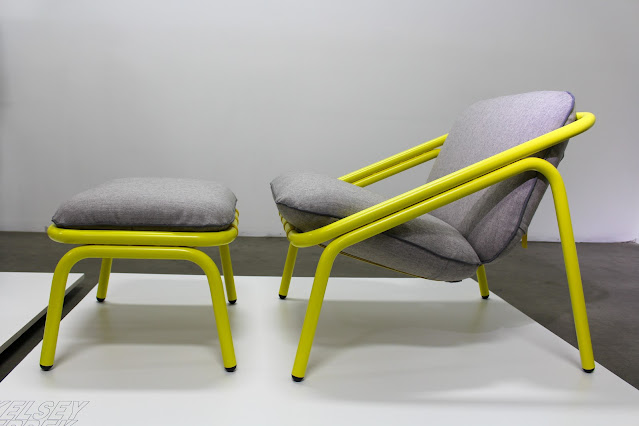Hoima Bicycle: IDSA webinar follow-up
 Thanks to Leslie Speer, Leslie Cron and the IDSA for allowing me to share the story of the Hoima Bicycle project. The webinar was attended by about 50 people from around the world. And I received great suggestions on improvements and ways to continue the project.
Thanks to Leslie Speer, Leslie Cron and the IDSA for allowing me to share the story of the Hoima Bicycle project. The webinar was attended by about 50 people from around the world. And I received great suggestions on improvements and ways to continue the project.Prototype 1.0

The first prototype design is essentially an elongated mountain bike with an integrated rack. The front geometry has comfortable mountain bike geometry with a low stand-over height, rigid fork, and 26 inch front wheel. The 20 inch rear wheel has been moved back, increasing its wheelbase 10 inches which allows for a more distributed load between the two wheels and provides more area for loads and passengers. A rear rack is designed to be integrated into the welded frame and is in the form of a tetrahedron. This is a very structurally rigid and lightweight form.
All extraneous parts and accessories were omitted. The rear wheel uses a coaster brake hub to eliminate rear cables, brake pads, and reduce maintenance. The drive train is a simple roller chain, single-speed freewheel and is geared low to roll at 12 mph at 90 rpm. (3.7 m (145 inches) per revolution development). A small rear wheel allows for a lower platform and center of gravity for carrying cargo. This would be advantageous for some types of low density cargo, such as firewood or charcoal and is stacked high on the bike. A small 20 inch wheel is structurally stronger but has higher rolling resistance than a 26 inch or larger wheel.
Reactions and Revisions

Several meetings were held with many different Ugandans in Hoima to test ride the bicycle and discuss ways that it could be improved and features that they liked. Positive comments were received on its light weight, lower gear ratio, performance of linear brakes, riding comfort, color and its ability to carry loads. Negative reactions were regarding its different sized wheels, the lack of a chain guard, the rear platform low height, its need for foot pegs, and its lack of compatible parts availability. Everyone was open to new technologies, such as linear pull brakes and quick release skewers, as long as there were compatible parts available. “How much will it cost?” and “Can I get spare parts” were the most commonly asked questions. The bike performed well through many rides on the rough roads around Hoima and was used frequently with passengers.
This design was just issued a US Design Patent, and if a bicycle manufacturer is interested in licensing the design, they can contact me directly.



Comments
Secondly, the University owns my IP, so it's not ultimately for me to decide.
Also, did you mean to say you applied for a utility patent and that you have global - or at least African - legal protection? If the intent is protect the design from exploitation, I can't imagine anything less would suffice.
Lastly, could not the University opt to open source the design to help kickstart global innovation? It wouldn't be the first time academia has done this.